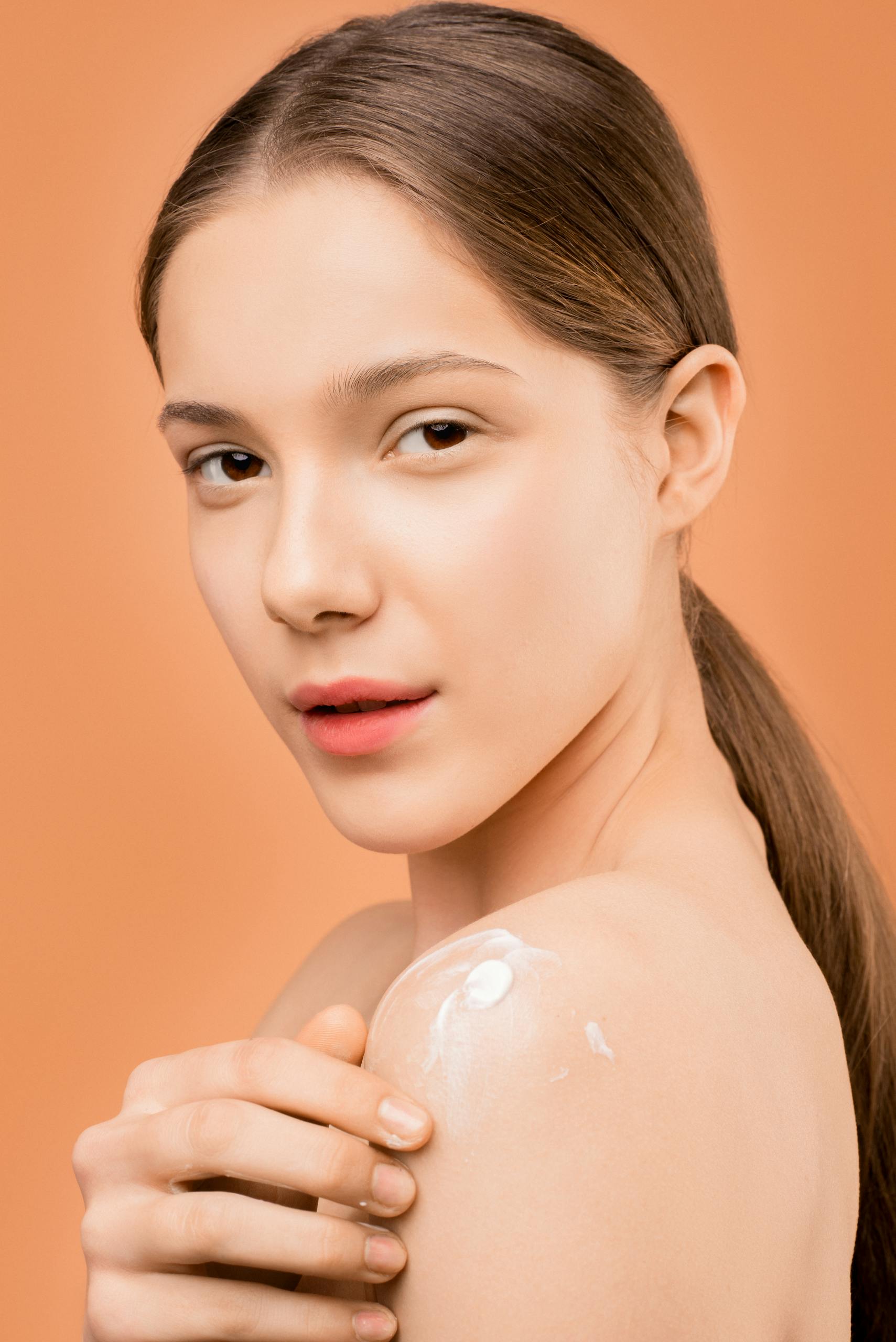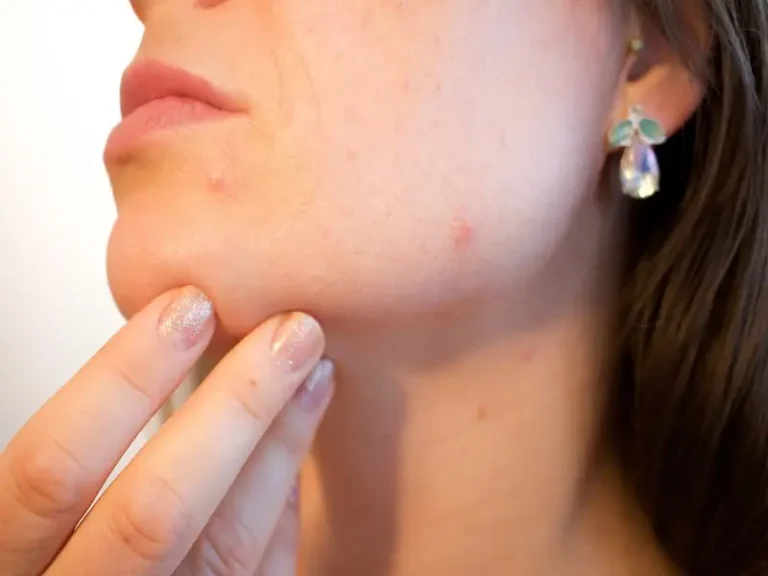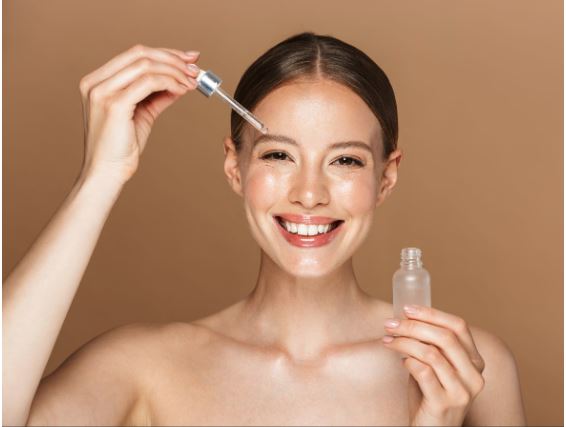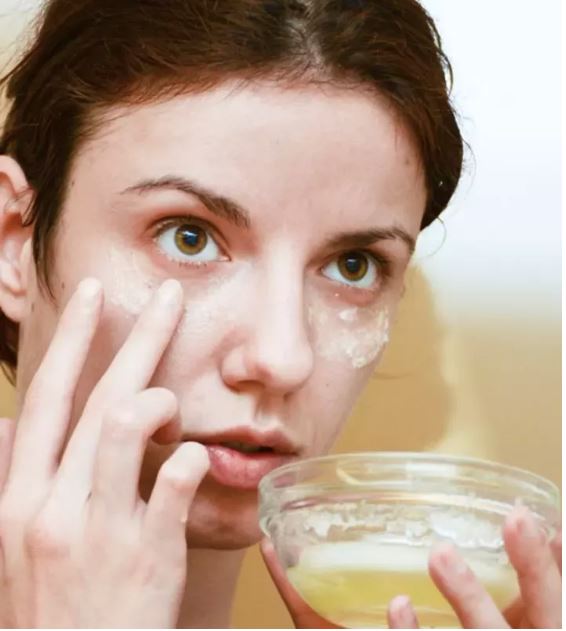10 Essential Skincare Tips for Managing Oily Skin
Dealing with oily skin can feel like an uphill battle, but worry not! Here are 30 practical skincare tips to help you manage excess oil and achieve that fresh, balanced complexion. Whether you’re struggling with shine throughout the day or looking for long-term solutions, these tips will make your skincare routine a breeze.
Understanding Your Skin Type

Understanding your skin type is a game changer for your skincare routine. The image shows a person with different skin types labeled: oily, dry, and combination. Each type has unique needs and concerns.
If you have oily skin, you might struggle with shine and breakouts. This skin type often produces more oil than needed. On the other hand, dry skin may feel tight and look dull, needing more hydration and gentle products.
Combination skin can be a mix of both, often oily in some areas and dry in others. This can make it tricky to choose the right products.
Identifying your skin type helps you select the right products. Knowing whether your skin is oily, dry, or combination allows you to target the specific issues you face. This understanding is key to achieving clear and healthy skin.
Sunscreen Selection for Oily Skin

Choosing the right sunscreen is key for oily skin. The products in the image show various options designed to cater to this skin type.
First, look for sunscreens labeled as non-comedogenic. This means they won’t clog your pores, which is crucial for oily skin.
The image features several brands, each promoting lightweight formulas that absorb quickly. Lightweight sunscreens help prevent that greasy feeling while still offering sun protection.
Check for gel-based or water-based options, as these tend to be more suitable for oily skin. They offer a matte finish and help control shine.
Don’t forget about SPF! Aim for at least SPF 30 for daily use to keep your skin protected from harmful UV rays.
Diet and Its Impact on Skin Oiliness

Your diet has a significant effect on how oily your skin can become. Eating the right foods can help balance oil production and improve your skin’s overall health. Think of it like fueling your body with the best ingredients.
The image shows a colorful variety of fruits and vegetables. These vibrant foods are packed with vitamins and minerals that are great for your skin. For instance, foods rich in antioxidants, like berries and citrus fruits, can help reduce inflammation and nourish your skin.
Vegetables like cucumbers and peppers are hydrating and can help keep your skin fresh. Carrots are high in beta-carotene, which can improve skin texture. Including these in your meals can promote a healthy glow.
On the other hand, processed foods and sugary snacks can lead to increased oil production and breakouts. Keeping a balanced diet of whole foods can support clearer skin.
So, grab some colorful fruits and veggies next time you shop. They not only taste great but also help manage that oily skin.
Exfoliation Techniques to Control Oil

Exfoliation is key in managing oily skin. It helps remove dead skin cells, preventing clogged pores and excess oil buildup. The image above showcases a variety of skincare products designed to help with this process. Each product plays a role in achieving a clear complexion.
Using physical exfoliants, like scrubs with gentle beads, can be effective. They provide instant results by sloughing off dead skin. On the other hand, chemical exfoliants, such as those with salicylic or glycolic acid, penetrate deeper to clear out pores and control oil production.
It’s important to find the right balance. Over-exfoliating can irritate your skin, leading to more oil production. Aim for exfoliating 1-3 times a week, depending on your skin’s sensitivity.
Incorporating these products into your routine can drastically change how your skin feels and looks. Just remember to follow up with a good moisturizer to keep your skin hydrated while managing oil levels.
Importance of a Consistent Cleansing Routine

Having a consistent cleansing routine is key to managing oily skin. The image shows a clean bathroom counter with various skincare products neatly arranged. Each bottle represents a step in your skincare process, highlighting how organization can make your routine easier.
Washing your face regularly helps remove dirt, oil, and impurities that can lead to breakouts. It’s important to choose the right cleanser for your skin type. A gentle, foaming cleanser is often ideal for oily skin.
Incorporating a cleansing routine helps to control excess oil production. When your skin is clean, it can breathe and function properly. This routine can also enhance the effectiveness of other products you use.
Remember, consistency is essential. Try to stick to your routine, even on those busy days. Your skin will thank you for it!
Incorporating Toners into Your Routine
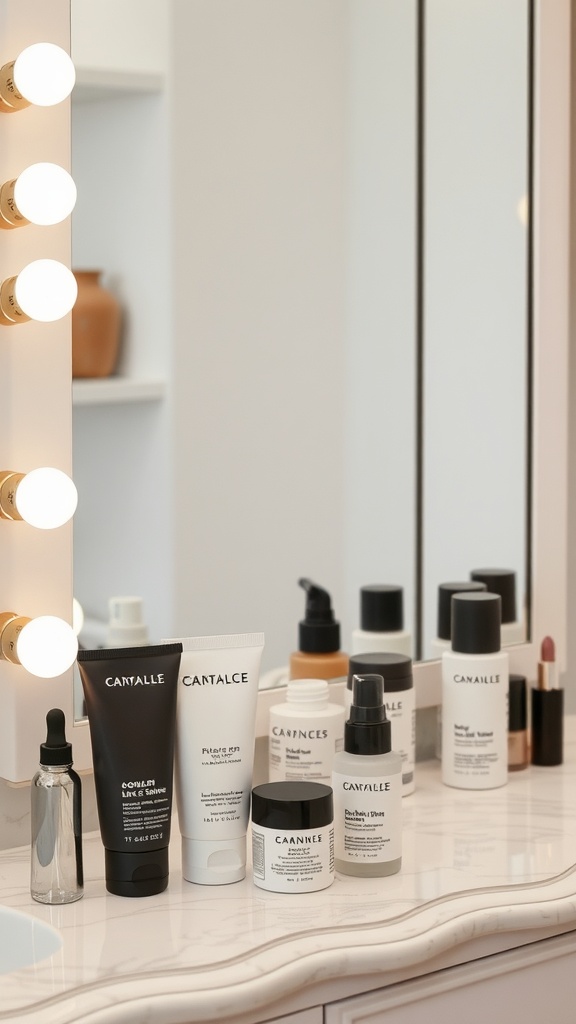
Toners can be an awesome addition to your skincare routine, especially if you want to control oil. The image shows a variety of skincare products lined up neatly, indicating a thoughtful approach to skincare. With options like serums and moisturizers, these products can complement a toner’s role.
Using a toner helps to balance your skin’s pH levels after cleansing. Many toners contain astringent ingredients that can reduce excess oil and tighten pores. This step can prepare your skin for the following products, enhancing their effectiveness.
When choosing a toner, look for those that are alcohol-free. Alcohol can dry out your skin, leading to more oil production. Instead, opt for toners with natural ingredients like witch hazel or tea tree oil. These can help control oil without stripping your skin.
Incorporate toner into your routine by applying it after cleansing. You can use a cotton pad or just your hands. Gently pat it onto your skin for better absorption. This simple step can make a noticeable difference in how your skin feels and looks.
Choosing the Right Moisturizer for Oily Skin
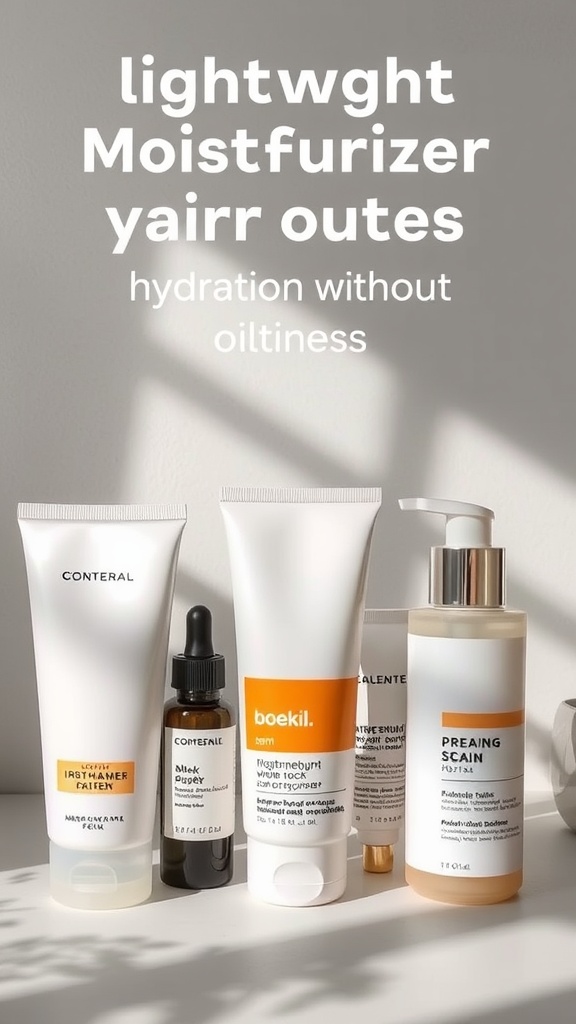
Finding the right moisturizer can be a game-changer for those with oily skin. It’s all about hydration without adding extra shine. The image shows a variety of lightweight moisturizers, designed to deliver moisture effectively without the greasy feel.
When you look at these products, notice that they emphasize hydration without oiliness. This is key. Many oily skin types think they need to skip moisturizer altogether, but that’s a mistake. Skin still craves moisture, even if it’s oily.
Look for labels that say ‘lightweight’ or ‘oil-free.’ Ingredients like hyaluronic acid and glycerin can hydrate without the heaviness. The visual display in the image highlights different formulations that cater to these needs, showcasing options that blend well into the skin.
Don’t forget to test a product before fully committing. Everyone’s skin reacts differently. A small patch test can save you from a potential breakout. Overall, choosing the right moisturizer can keep your skin balanced and glowing!
The Role of Clay Masks in Oil Control
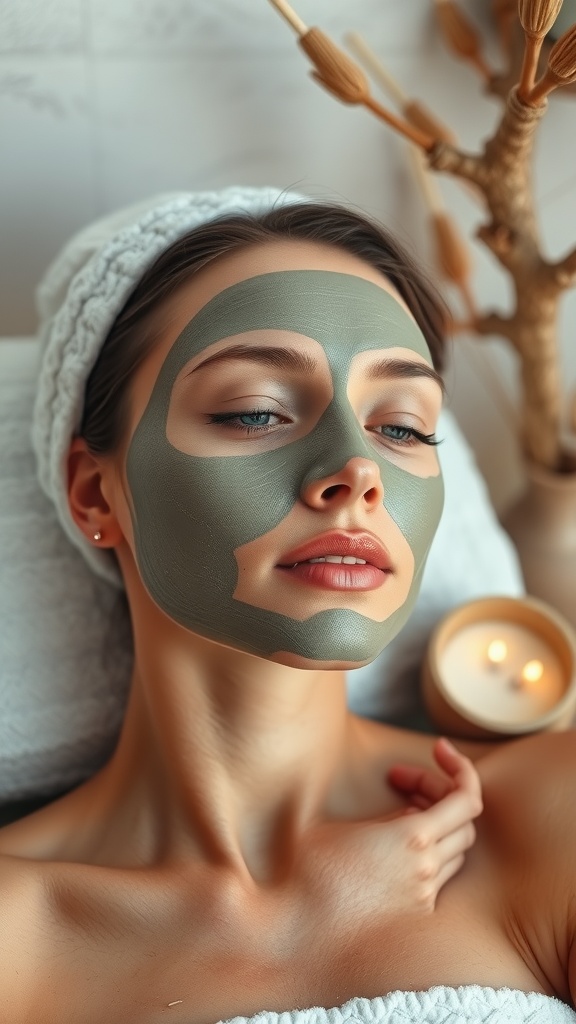
Clay masks are a popular choice for those looking to manage oily skin. They work wonders by absorbing excess oil and impurities, leaving your skin feeling fresh and clean. The image shows a person enjoying a clay mask, which is often a relaxing and rejuvenating experience.
The soothing texture of the mask can help calm the skin while providing a deep cleanse. Clay masks, like bentonite or kaolin, are especially effective for oily skin types. They draw out toxins and can help reduce the size of pores, which is a win for anyone struggling with shine.
Incorporating a clay mask into your skincare routine once or twice a week can make a noticeable difference. Not only does it help in oil control, but it can also improve the overall texture of your skin. So, if you’re on a quest for clearer skin, consider adding a clay mask to your regimen.
Managing Stress for Better Skin

Stress can really take a toll on your skin. The image captures a peaceful moment of meditation by serene waters, reminding us of the importance of finding calm in our busy lives. When we manage stress effectively, we can see improvements not just in our mood but also in our skin’s appearance.
High stress levels can lead to excess oil production, breakouts, and dull skin. It’s essential to incorporate stress management techniques into your daily routine. Meditation, like shown in the image, is one of those powerful tools that can help reduce anxiety and promote a sense of well-being.
Consider setting aside a few minutes each day for mindfulness practices. Whether it’s through meditation, deep breathing exercises, or even a calming walk outdoors, these moments can bring clarity and help you manage stress better. Your skin will thank you for it!
Regularly Changing Pillowcases and Towels

Your skin needs a fresh environment to thrive, and that includes the things it comes into contact with regularly. Changing your pillowcases often is a simple yet impactful step. When you sleep, oils, dirt, and product residue can build up on your pillow. This can lead to breakouts or irritation, especially for those with oily skin.
It’s not just your pillowcases that need attention. Towels play a big role, too. Using clean towels can prevent bacteria from transferring back to your skin after washing your face or showering. Make it a habit to swap them out weekly for a clearer complexion.
In the image, you can see a cozy, clean bed setup. The fresh towels are neatly folded, ready for use. This tidy space reflects how having clean linens can contribute to a more inviting environment. A clean space promotes relaxation, which is also good for your skin. So, keep those pillowcases and towels fresh, and your skin will thank you!
